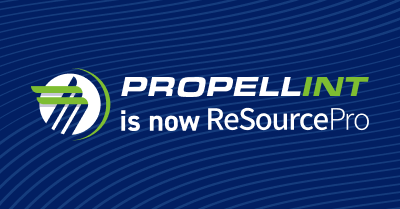Cheryl Kusick is Director, Operations Advisory and Kimberly Decort is an Operations Consultant at ReSource Pro.
Why customer experience in insurance matters
Not long ago, the customer journey was simple: when a customer wanted support, they would wait until a certain time of day to make a call, or they could send a letter by snail mail. Today, that journey has changed entirely. From email to live chat, customers are connected 24/7, and there are countless channels through which they can research, talk about, or contact your business.
For many customers, the experience you deliver is a brand differentiator, and a poor one can lose you business, or worse, cause a ripple effect throughout your customer base. But fortunately, the converse is also true. Delivering positive customer experiences can drive revenue, with satisfied policyholders being 80% more likely to renew than unsatisfied ones and customer centric brands being 60% more profitable than those that don’t focus on the customer.
The customer experience remains as important as ever, yet expectations have changed. Here’s how you can deliver.
Capture the voice of the customer
Customer feedback, or the voice of the customer (VOC), is one of your most valuable assets. Ensure you have developed ways to continuously obtain customer feedback, such as surveys, interviews, and focus groups.
Also engage all employees in your organization, including front-line and leadership, in collecting VOC. This may include creating customer champions, who can establish a deeper relationship with customers to understand their needs, or a customer council, whereby customers can communicate their thoughts directly.
Create consistency and reliability
Even if you understand the voice of the customer and hire great customer service professionals, things can still go awry, and you want your approach to minimize the negative impact on the customer experience.
When something goes wrong, make sure you have an action plan for service recovery, which outlines steps to:
- APOLOGIZE to the customer.
- FIX the issue.
- PREVENT future occurrences.
Keep in mind that although successful service recoveries are good, they are costly to carry out and, despite a positive outcome, the reputational damage has already been done. Focus on step three, preventing the need for a service recovery, by building consistency and reliability within your organization. Knowing your customers’ expectations, constantly monitoring key deliverables and quality, and putting equal emphasis on new and legacy clients all contribute toward this goal.
Customer experience metrics for insurance
To help gauge your organization’s customer service performance, monitor key metrics such as the number and frequency with which poor customer experiences occur and how quickly you respond to customer needs—is it within four hours, 24 hours, 48 hours? In addition, leverage any insights you gain from your VOC efforts and compile any relevant industry data, such as Net Promoter Scores, which you can use as a benchmark.
READ HOW RESOURCE PRO DROPPED CALL ABANDONMENT RATES FROM 33% TO 8%
Build customer loyalty during difficult times
Are you prepared for when a catastrophic event affects your customers? Availability and turnaround times will need to be at their best on short notice during these times, as customers are typically focused on safety and getting information quickly. Consider shifting metrics at call centers during times of crisis so that employees can take a more patient approach to helping clients in need, ensuring they walk away happy.
Additionally, have staff practice using empathetic language such as, “How are you doing, what can we do to support you?” to add a human touch to your service.
Case study: exceptional customer service in a time of crisis
Sometimes, agencies can’t support clients during their time of need, either because staff are stretched thin or because the agency itself has been impacted by a disaster. That’s when having a customer service partner can help the most. The latter is what several ReSource Pro clients experienced in 2017, when Hurricane Harvey hit Texas.
READ CASE STUDY ABOUT DELIVERING EXCEPTIONAL SERVICE IN CRISIS
In 2017, several agencies that work with ReSource Pro were impacted when Hurricane Harvey hit Texas. In the aftermath of the storm, severe flooding prevented the agencies from operating for weeks. Leveraging its Insurance Experience Center (IX Center), ReSource Pro was able to step in and provide uninterrupted service to the agencies’ customers, who were then able to recover more quickly from the storm.
Want to find out how we can help transform your customer experience? Visit our IX Center webpage or contact us to learn more.




